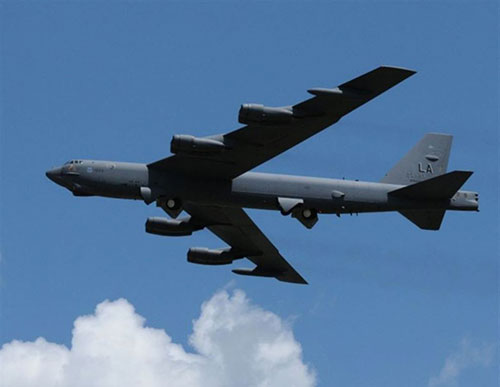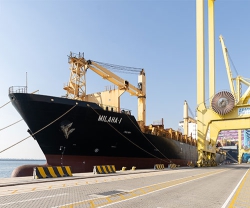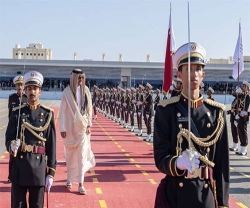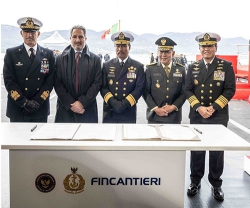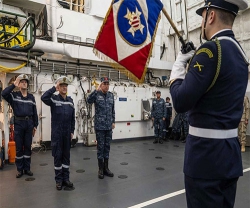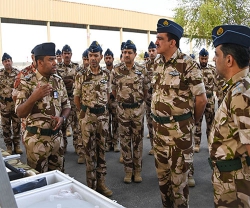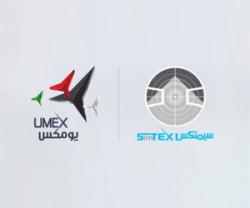On Sunday US National Security Adviser John Bolton announced that the USS Abraham Lincoln Carrier Strike Group and a bomber task force have been deployed to the Middle East as the Trump administration sees “clear indications” of threats from Iran to US forces in the region.
The US military said Tuesday that B-52 bombers will join additional forces being sent to the US Central Command region, according to Reuters report.
The announcement was made by Navy Captain Bill Urban, a spokesman for US Central Command, who said Marine General Kenneth McKenzie, the Chief of US Central Command, requested additional forces in the Middle East “to protect US forces and interests in the region and to deter any aggression” after receiving information about a credible threat, The Washington Post report said.
“We continue to closely monitor the activities of the regime in Iran, their military, the Islamic Revolutionary Guard Corps (IRGC), and their proxies, and we are well postured to defend U.S. forces and interests,” Bill Urban said as cited by The Hill.
Four B-52 Stratofortress strategic bombers are expected to be deployed to the Middle East in response to what US Acting Secretary of Defense Patrick Shanahan dubbed “indications of a credible threat by Iranian regime forces.”
Two of the nuclear-capable bombers were slated to leave Tuesday from Barksdale Air Force Base in Louisiana, arriving at Al Udeid Air Base in Qatar on Wednesday, a CBS News report says.
The deployment of the Lincoln strike group and the B-52s “are considered prudent steps to protect US forces and interests in the region and to deter any aggression,” said Urban.
The deployment of additional forces comes amid growing tensions between Washington and Tehran, and the former's efforts to intensify pressure against Iran, following the 2018 US withdrawal from the Joint Comprehensive Plan of Actions (JCPOA).
The U.S. Air Force describes the B-52 as a long-range, heavy bomber that can perform a variety of missions. The bomber is capable of flying at high subsonic speeds at altitudes up to 50,000 feet (15,166.6 meters). It can carry nuclear or precision guided conventional ordnance with worldwide precision navigation capability.
In a conventional conflict, the B-52 can perform strategic attack, close-air support, air interdiction, offensive counter-air and maritime operations. During Desert Storm, B-52s delivered 40% of all the weapons dropped by coalition forces. It is highly effective when used for ocean surveillance, and can assist the U.S. Navy in anti-ship and mine-laying operations. Two B-52s, in two hours, can monitor 140,000 square miles (364,000 square kilometers) of ocean surface.
All B-52s can be equipped with two electro-optical viewing sensors, a forward-looking infrared and advanced targeting pods, to augment targeting, battle assessment, and flight safety, thus further improving its combat ability.
Pilots wear night vision goggles, or NVG, to enhance their vision during night operations. Night vision goggles provide greater safety during night operations by increasing the pilot's ability to visually clear terrain, to increase the peacetime and combat situational awareness of the aircrew and visually acquire other aircraft.
B-52s are currently upgrading from the Litening Advanced Targeting Pod to the Sniper Advanced Targeting Pod. Sniper pods provide improved long-range target detection/identification and continuous stabilized surveillance for all missions, including close air support of ground forces. The pod’s advanced targeting and image processing technology significantly increases the combat effectiveness of the B-52 during day, night and under-the-weather conditions in the attack of ground targets with a variety of standoff weapons (i.e., laser-guided bombs, conventional bombs and GPS-guided weapons).
The use of aerial refueling gives the B-52 a range limited only by crew endurance. It has an unrefueled combat range in excess of 14,080 kilometers.

